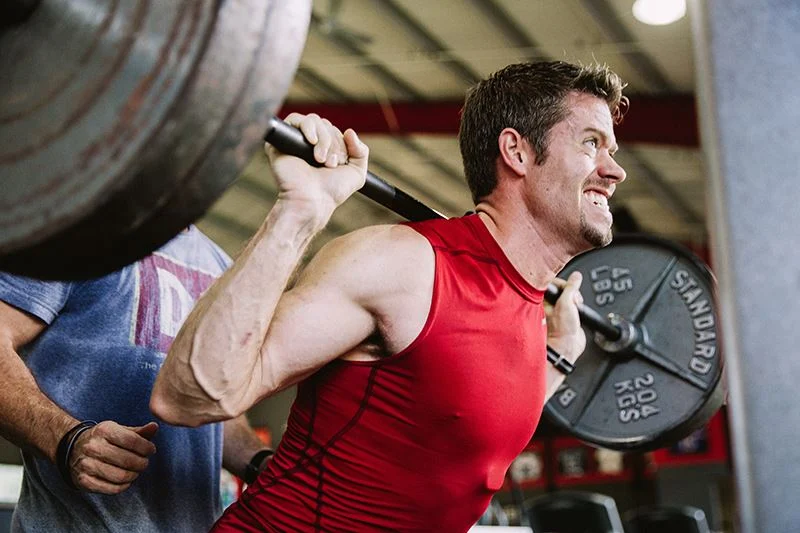Athletes in Dallas face unique challenges in maintaining peak performance while avoiding injuries that could sideline them. Combining structured training programs with orthopedic expertise provides a comprehensive approach to improving fitness and managing recovery. By integrating advanced training features with personalized care, sportspersons can achieve optimal results while ensuring their long-term well-being. Let’s cover how this combination supports athletes in building strength, preventing injuries, and attaining their goals.
Tailored Programs for Optimal Results
Athletes seeking comprehensive fitness solutions turn to programs like D1 Training in Dallas. TX, for tailored approaches that meet their individual goals. These training systems focus on enhancing strength, speed, agility, and endurance through structured exercises.
Personalization is at the heart of these programs. It allows individuals to work on areas that need improvement while building on their strengths. Coaches assess the sportsperson’s current condition, performance objectives, and any limitations to design a plan that aligns with their needs. This targeted approach ensures efficient progress, whether preparing for competition or improving overall fitness. With personalized programs in place, athletes can push their limits safely by incorporating strength and conditioning exercises designed to reduce injury risks.
Injury Prevention Through Strength and Conditioning
Injuries are a common concern for athletes, especially those participating in high-impact activities. Strength and conditioning exercises play a vital role in preventing injuries by improving muscle balance, flexibility, and joint stability.
Dallas training programs emphasize exercises that reduce the risk of common issues like sprains or muscle strains. Movements are designed to strengthen weak areas and enhance overall body mechanics. For example, core stabilization and lower-body strength work help protect the knees and hips during physical activity.
By focusing on injury prevention, athletes can maintain consistency in their performance while reducing downtime caused by physical setbacks. After building a strong foundation through injury-prevention exercises, integrating recovery practices becomes essential for maintaining peak athletic performance over time.
Integrating Recovery Practices for Sustainable Performance
Recovery is essential to any athletic routine, allowing the body to heal and adapt to increased physical demands. Training programs often include recovery-focused elements such as stretching, mobility exercises, and guided cooldowns to promote better healing.
For sportspersons recovering from injuries, orthopedic support becomes even more critical. Specialists work alongside trainers to monitor progress and recommend modifications that facilitate safe participation. Combining recovery practices with ongoing training helps athletes stay on track while minimizing the risk of recurring issues.
Techniques like foam rolling, dynamic stretching, and active rest are often incorporated into routines. This ensures athletes feel refreshed and ready for their next session. Once recovery is properly managed, athletes are better prepared to adopt advanced training techniques that enhance their speed, agility, and overall performance.
Performance Enhancement Through Advanced Techniques
To excel in their respective fields, athletes require access to advanced techniques that push their boundaries without compromising safety. Innovative training systems incorporate scientifically backed methods that improve speed, agility, and explosive power.
These techniques include plyometric drills, resistance exercises, and agility ladder work, which enhance coordination and reaction time. Personalized monitoring ensures that sportspersons progress at a pace suited to their abilities, avoiding overtraining or burnout.
Performance enhancement isn’t limited to physical skills—it also involves mental preparation. Coaches often integrate goal-setting and motivation techniques into training programs, helping players build confidence alongside their physical capabilities. By incorporating cutting-edge training methods, athletes can push their limits while minimizing risks—a goal best achieved through collaboration with orthopedic specialists.
Benefits of Combining Orthopaedic Expertise with Training Programs
Athletes in Dallas benefit greatly from integrating orthopedic assistance with their training routines. Specialists provide insights into injury prevention, rehabilitation, and long-term joint health, creating a well-rounded approach to athletic performance.
For instance, working with professionals who understand movement mechanics allows players to correct imbalances or improper techniques that may lead to discomfort. This collaboration ensures that training efforts complement the body’s needs, leading to improved outcomes and reduced risk of injury. Facilities combining sports science and medical expertise are invaluable resources for athletes seeking holistic care.
You may also read: Managing Fluid Overload and Dehydration in Acute Kidney Injury
Combining D1 Training in Dallas. TX, with orthopedic assistance, offers athletes a comprehensive path to achieving their fitness goals safely. By focusing on tailored programs, injury prevention, recovery, and performance enhancement, these integrated approaches ensure players can perform at their best while maintaining long-term health. This collaboration creates an environment where athletes thrive, both on and off the field.

